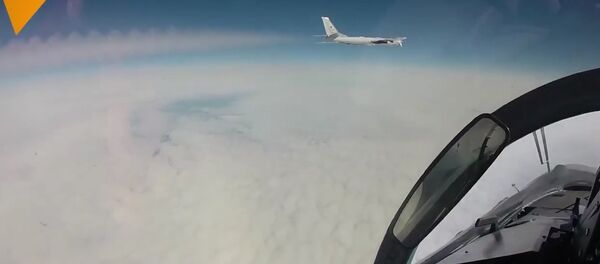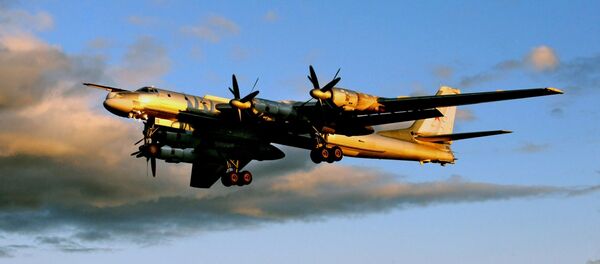In addition, the Tu-95 is one of the fastest turboprop planes in aviation history. It has one downside though: because of its twin contrarotating propellers, the noise produced by Tu-95s has reportedly been remarked upon by submarine crews and even jet pilots.
“The Tu-95 is Russia’s B-52 — but one with a decidedly maritime bent and a habit of knocking at the door of coastal air-defense systems in Europe, Asia and North America,” Roblin wrote.
He added that with a new weapons array installed, the Tu-95 gets a new lease on life.
“Of course, the Bear is anything but stealthy and could not survive against modern air- and surface-launched antiaircraft missiles. However, a Bear launching cruise missiles doesn’t have to get close to air defenses in the first place,” Sebastian Roblin noted.
Over 500 Tu-95s of different modifications have rolled off the assembly line since they entered service in 1956.
In an interview with Sputnik, editor-in-chief of National Defense journal Igor Korotchenko expanded on the specific features of the Tu-95MS strategic bomber.
“The Tu-95SM is part of Russia’s strategic nuclear forces. This tried-and-true workhorse is now being modernized with new onboard electronics and other systems. Even though designed back in the 1950s, the Tu-95s are extremely reliable and their biggest forte is the ability to carry cruise missiles,” Korotchenko said.
He added that with planes like these Russia was prepared for any crises and challenges.
He added that Russia was now upgrading its military airfields, including in the Arctic, to handle strategic bombers.
“This means that, flying outside the range of enemy radar, our bombers can launch cruise missiles suddenly, stealthily and efficiently. This is effective nuclear deterrence and something the West is perfectly aware of,” Korotchenko emphasized.
The Tupolev Tu-95 is a large, four-engine turboprop-powered strategic bomber and missile platform.
First flown in 1952, the Tu-95 entered service with the Soviet Air Force in 1956 and is expected to serve Russia’s Aerospace Forces until at least 2040. Its maritime patrol version is designated Tu-142 and a passenger airliner derivative was called Tu-114.
Soviet leader Nikita Khrushchev flew on board a Tu-114 during his state visit to the United States in 1959.
Never miss a story again — sign up to our Telegram channel and we'll keep you up to speed!




